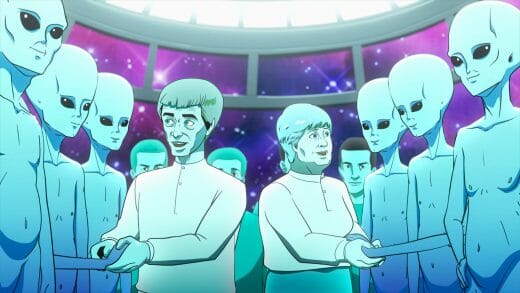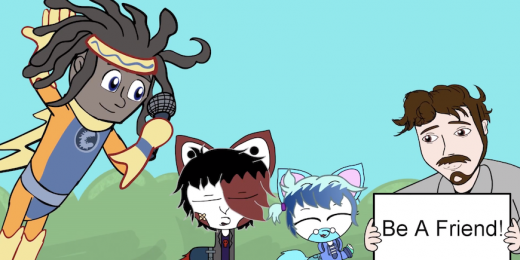As a director, winning the Annecy International Animated Film Festival’s prestigious Cristal Award for a sophomore feature would be impressive. For a debut film, it is exceptional and requires an inspired vision given form through incredible animation. In the case of Denis Do, the first-time director behind 2018 Cristal Award winner Funan, he rose above the competition with storytelling that crossed borders and generations — brought to life in Toon Boom Storyboard Pro and Toon Boom Harmony.
Alongside Tito and the Birds, Funan was among the two films produced in Toon Boom software nominated for the 2018 Cristal Award. In comparison to the Academy Award for Best Animated Feature, which generally favours big-budget, blockbuster 3D movies aimed at children, the Annecy accolade tends to think outside the box office — valuing artistic achievement, ambition and adult-oriented content, too. Funan is proof of that.
Funan tells the heart-wrenching, harrowing tale of a displaced family trying to survive under the Khmer Rouge regime in 1970s Cambodia. Inspired by the real-life experience of Denis Do’s own mother, it uses 2D animation to masterfully harmonize historical and human elements. As migrants in the United States and Europe continue to dominate headlines, Funan’s story is not only touching, but timely.
With added momentum from its 2018 Cristal Award win at Annecy, Funan screened for audiences at the Champs-Élysées Film Festival and has upcoming festival dates that will be announced soon. We caught up with director Denis Do to chat about his career, his family’s story and the award-winning benefits of producing a feature film in Toon Boom software.
Congratulations on the Cristal Award win, Denis. How does it feel to have Funan recognized?
DD: Thank you! I feel grateful and happy our teamwork has been recognized and rewarded. When this project started many years ago, I never expected such a warm welcome at Annecy. It was a huge surprise.
The Cristal Award win is quite meaningful to me because Funan is my first film and even if I was convinced of my vision, I had my doubts. The award makes me feel better about that and lets me think I can keep creating films.

Source: Denis Do.
Having learned to create films at Gobelins and in the French animation industry, what were your most formative experiences as a director?
DD: That’s tough to answer. After my graduation, I focused on Funan. I knew it would take a while so I needed to support myself with other work and seized every opportunity to learn, and improve and prepare myself.
I had beautiful experiences not only as a director, but also as an artist and technician doing storyboards for companies like NKI and Supamonks Studio, or background layouts on Long Way North by Rémi Chayé.
Once you got to Funan, how did working with producers Les Films D’Ici benefit the process?
DD: I chose to work with Les Films D’Ici because they allow their storytellers to have creative freedom. Maybe I was naive before, but I used to be very careful about producers. I didn’t want anyone to change the essence of the story I wanted to tell and its point of view. I had confidence in Les Films D’Ici and their ability to respect and defend my content.
Speaking of personal content, I read Funan was inspired by your mother’s life in Cambodia under the Khmer Rouge. How much of the film was drawn from reality?
DD: There was a balance between sticking to the historical reality and creating the film’s environment. My goal wasn’t only to represent, but to also re-appropriate the pictures and memories — to make them live and to live with them. Animation is perfect for such a task.
Funan is based on personal and historical events, but it is also a work of fiction. We took creative liberties in terms of script and imagery. Because the content is based on my family’s story, it has followed me from my childhood until now. It was inevitable that I would do something with it because this heritage is very strong in my mind — and will stay like that forever.
 Source: Les Films D’Ici.
Source: Les Films D’Ici.
The film also touches on a point very relevant in today’s world: The life of the exile, the migrant. I’m sensitive to this as I am a second-generation immigrant. My family has a long history of exile; my grandparents left China during the Japanese invasion and fled Cambodia under the Khmer Rouge. Such a background impacts you and the way you think, through generations. I always have the feeling this life can stop, everything can turn bad and we will need to leave again.
With such serious subject matter, why did you feel it was important to tell this story through animation?
DD: Animation let me avoid representing the character of my mother through a real actress. Also, while animation might have less space for spontaneity, it allows for greater control at each step of production. Funding the film was quite interesting; Funan is not based on a famous novel or comics, was my first movie and had adult content — the ingredients of making a project hard to fund.
Thanks to the French funding system and other European sources, we were able to start Funan. To be honest, the budget was still not enough. Artwork was made during the night, on weekends and during free time. The last two years of production were intense. We worked with six studios around the world, each with a small part of the film to do. Having funding meant the film could be made, but it never meant it would be easy or comfortable.
And why did you decide to pursue a hand-drawn 2D animation style?
DD: I love 2D animation and I am very sensitive to Japanese productions. Their storytelling is very efficient, avoiding useless actions. As I wanted less movements and actions, it was natural for me to think about 2D animation.
In French, we call animation “dessin-animé”, meaning “animated drawing”. Sometimes, I think the “animated” portion is overly emphasized; in Funan, I wanted to use “drawing” to tell the story. I believe a still picture can say a lot, and evoke emotion and intention. The film is more about composition, facial expressions and ambiance. I tried to avoid action and preferred to show a movement when it was finishing or starting. Also, a lot of action occurs off-screen, allowing the audience enough space to imagine and feel.
 Source: Les Films D’Ici.
Source: Les Films D’Ici.
Was it important for you to work with Cambodian animators like ithinkasia in Phnom Penh?
DD: I chose to involve young Cambodian artists because the film is also a part of their story. It was a great opportunity for them and it made sense for me. I expect a lot from Cambodian artists and wish for them to create their own stories.
What were some of the major challenges in animating Funan, and how did working with Toon Boom Storyboard Pro and Harmony help overcome them?
DD: There were no big challenges with animating in Toon Boom Harmony as there were no troubles doing the animatics in Storyboard Pro. Those two softwares communicate perfectly and both are quite easy to handle.
Producing in a Toon Boom pipeline streamlined our workflow during every step of production, especially as we used Harmony to do the background and posing layouts. We saved a huge amount of time working with Toon Boom Harmony, and it helped keep us on-schedule and on-budget — both of which were tight!
How else did working within a Toon Boom pipeline make production smoother?
DD: Toon Boom Harmony is extraordinary. For a vector-based software, drawing in it feels natural and easy. Also, in terms of production, Harmony allowed me to correct posing or animations even during the final stages of compositing. Plus, by avoiding exporting, we saved tons of time.
So, what’s next for you and Funan?
DD: That’s my secret, for now!
Are you creating a feature film in Toon Boom animation software? Let us know about it in the comments below!
Banner image source: Les Films D’Ici.



